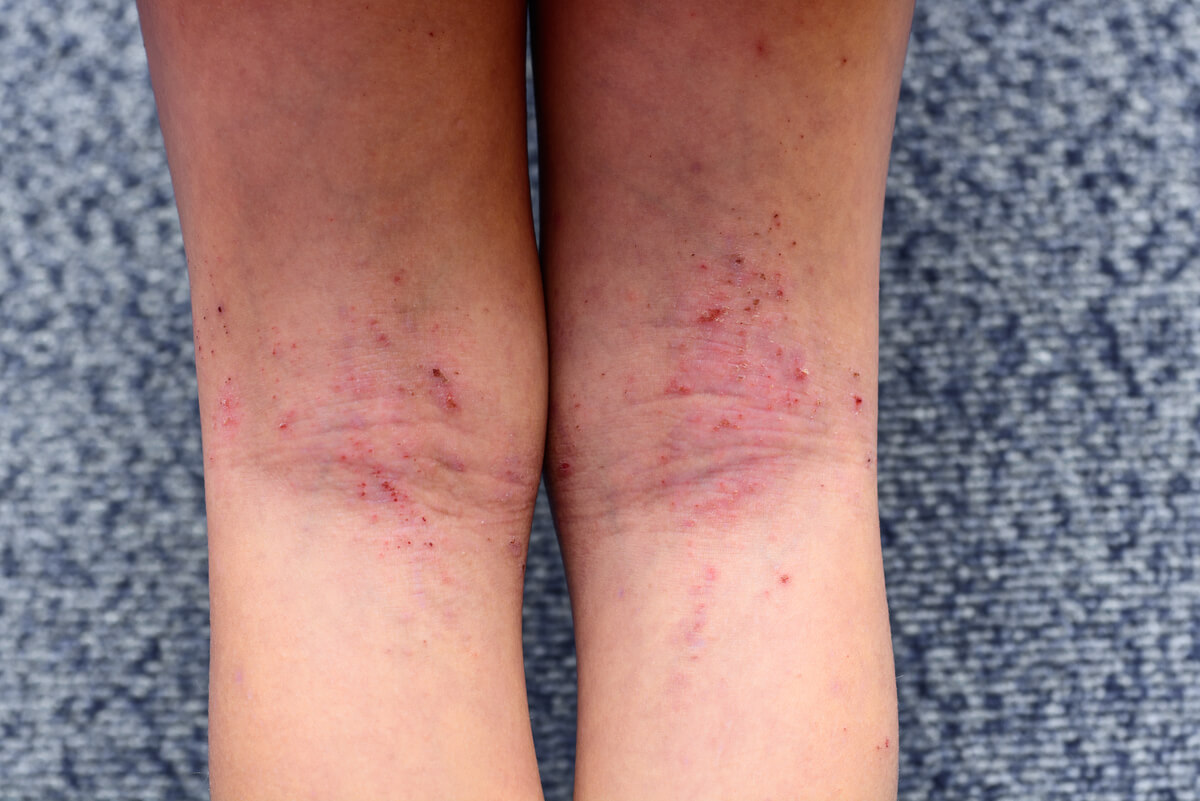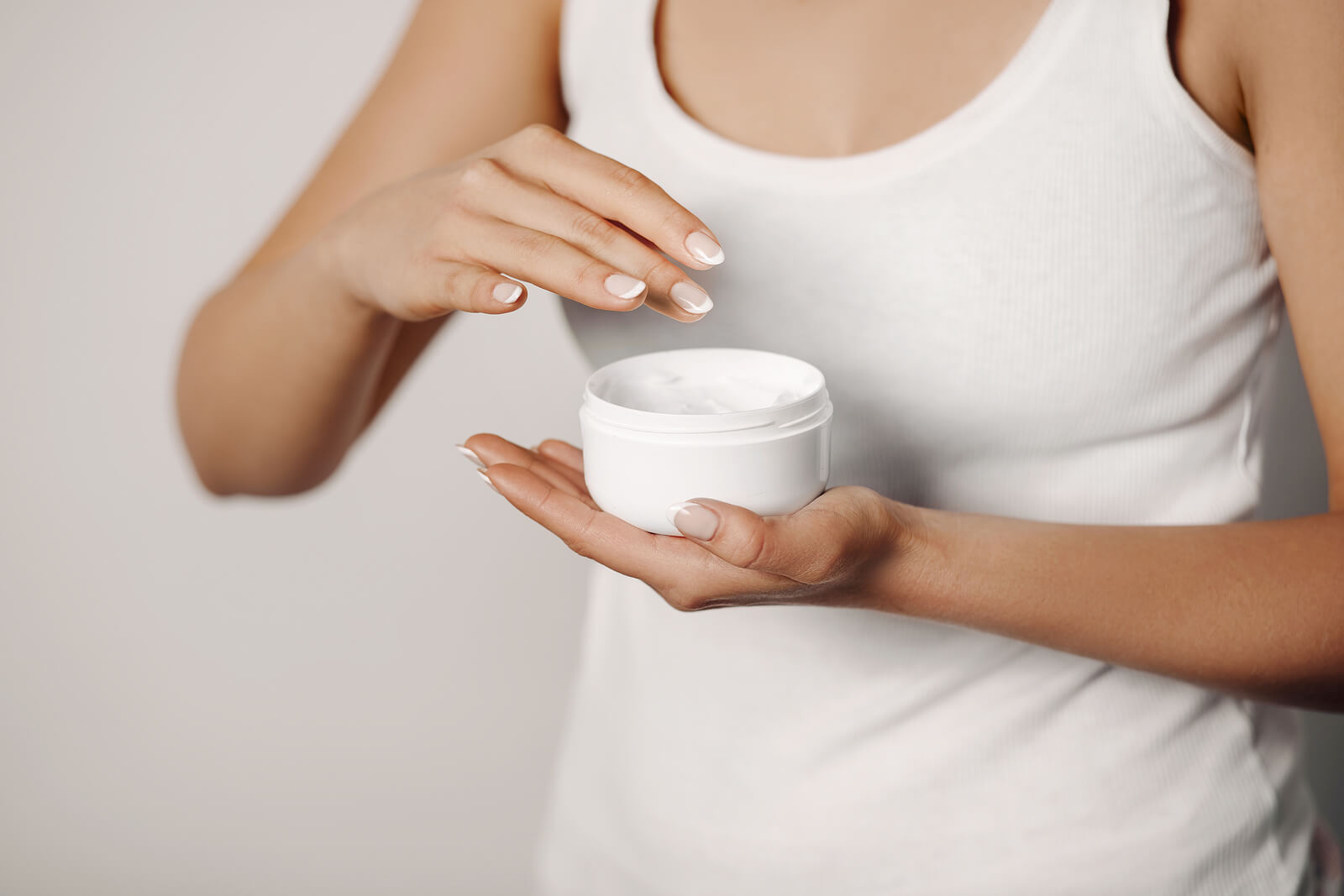What Is Contact Dermatitis?

Sometimes we want to try new products and, without putting much thought into it, we just go ahead and buy them. However, how many times have you tried a cosmetic that caught your attention (such as a hair dye, an enamel remover, a lotion, a skin cream etc.), and then it seemed to cause your skin to go red or get inflamed. Well, this is what is known as contact dermatitis.
Contact dermatitis is an inflammatory skin reaction that, as the name implies, is caused by direct contact with an irritant or allergen. For the latter, it can be classified as allergic contact dermatitis or irritant contact dermatitis.
While anyone can suffer from contact dermatitis at some point in their life, those with a history of allergies (of any kind) are at higher risk, experts say.
Symptoms

Contact dermatitis isn’t a life-threatening disease, but it can be very annoying and distressing, especially because of the aesthetic impact it has.
Generally speaking, it affects the parts of the body that were exposed to the offending substance. For example, if the cause was a lotion, it’ll affect the places where it was applied (arms, legs, torso, etc.) and if the cause was a lipstick, it’ll affect the lips.
Among the first symptoms that may appear (within minutes or even hours after contact) are redness and a rash. These can last 2 to 4 weeks, according to the Mayo Clinic.
Other of the more common symptoms of contact dermatitis are the following:
- Pruritus
- Dry skin
- Inflammation
- Itching, burning, or tenderness
- Blisters and lumps (in more severe cases)
Because of the types of symptoms it produces, we often call what may be contact dermatitis a “rash.”
Causes
As Mayo Clinic experts explain, “the offending substance can be one of thousands of known allergens and irritants.” At this point, we need to take into account that what can cause the reaction in one person, might not cause it in another. However, that doesn’t mean that at some point it won’t affect them.
The American Academy of Allergy, Asthma & Immunology tells us that contact dermatitis can be one of two types, depending on the type of substance that causes it. They’re the following:
- Allergic contact dermatitis (ACD) is usually caused by cosmetic products (including nail polish), sunscreen, medications (antibiotic creams, oral antihistamines, etc.), clothing dyes, nickel (present in costume jewelry), food, rubber, and poison ivy.
- Irritant contact dermatitis (INN) is commonly caused by soaps, hair products, rubbing alcohol, sawdust, wood dust, detergents, acids, bases, solvents, plants, fertilizers, pesticides, saliva, urine, and fecal matter.
According to a recent study, although parabens and fragrances in cosmetic products have been identified as common causes of allergic contact dermatitis, these aren’t the only ones that should be considered. Cosmetics that have natural ingredients aren’t exempt from causing skin reactions.
“Among patients with suspected ACD due to cosmetics there’s a high prevalence of sensitization to plant extracts, the most frequent being an allergy to tea tree oil and derivatives of the Compositae or asteraceae family“.
Diagnosis
To arrive at a diagnosis of contact dermatitis, the doctor needs to do an interview and a physical examination. Most likely, they’ll ask you several questions about the type of products you use regularly, what you think caused the reaction, if you have a history of allergies, etc. All the information you can provide will be helpful.
Although sometimes the diagnosis can be reached through the consultation and physical examination, in others it may be necessary to request some tests, such as an allergy test, for example.
Treatment

Treatment for contact dermatitis varies depending on its cause. However, in both cases, it means avoiding having contact with the irritant or allergen again, as well as avoiding scratching and manipulating the area (to avoid further injuring it and later scarring).
Looking after yourself is important for getting relief and preventing further discomfort. In this sense, washing the area with fresh water and the soap or product that the doctor recommends, drying yourself gently with a clean towel, and applying cold compresses are some measures that can be beneficial.
Before trying any natural remedies or over-the-counter products for rashes or skincare in general, you should ideally consult with your dermatologist. Failure to do so may expose you to adverse reactions instead of getting relief.
Keep in mind that not all rashes are the same nor do all skin types react the same, and it’s preferable to first find out which are the most appropriate options to treat them, than to just try some and make it worse.
Sometimes we want to try new products and, without putting much thought into it, we just go ahead and buy them. However, how many times have you tried a cosmetic that caught your attention (such as a hair dye, an enamel remover, a lotion, a skin cream etc.), and then it seemed to cause your skin to go red or get inflamed. Well, this is what is known as contact dermatitis.
Contact dermatitis is an inflammatory skin reaction that, as the name implies, is caused by direct contact with an irritant or allergen. For the latter, it can be classified as allergic contact dermatitis or irritant contact dermatitis.
While anyone can suffer from contact dermatitis at some point in their life, those with a history of allergies (of any kind) are at higher risk, experts say.
Symptoms

Contact dermatitis isn’t a life-threatening disease, but it can be very annoying and distressing, especially because of the aesthetic impact it has.
Generally speaking, it affects the parts of the body that were exposed to the offending substance. For example, if the cause was a lotion, it’ll affect the places where it was applied (arms, legs, torso, etc.) and if the cause was a lipstick, it’ll affect the lips.
Among the first symptoms that may appear (within minutes or even hours after contact) are redness and a rash. These can last 2 to 4 weeks, according to the Mayo Clinic.
Other of the more common symptoms of contact dermatitis are the following:
- Pruritus
- Dry skin
- Inflammation
- Itching, burning, or tenderness
- Blisters and lumps (in more severe cases)
Because of the types of symptoms it produces, we often call what may be contact dermatitis a “rash.”
Causes
As Mayo Clinic experts explain, “the offending substance can be one of thousands of known allergens and irritants.” At this point, we need to take into account that what can cause the reaction in one person, might not cause it in another. However, that doesn’t mean that at some point it won’t affect them.
The American Academy of Allergy, Asthma & Immunology tells us that contact dermatitis can be one of two types, depending on the type of substance that causes it. They’re the following:
- Allergic contact dermatitis (ACD) is usually caused by cosmetic products (including nail polish), sunscreen, medications (antibiotic creams, oral antihistamines, etc.), clothing dyes, nickel (present in costume jewelry), food, rubber, and poison ivy.
- Irritant contact dermatitis (INN) is commonly caused by soaps, hair products, rubbing alcohol, sawdust, wood dust, detergents, acids, bases, solvents, plants, fertilizers, pesticides, saliva, urine, and fecal matter.
According to a recent study, although parabens and fragrances in cosmetic products have been identified as common causes of allergic contact dermatitis, these aren’t the only ones that should be considered. Cosmetics that have natural ingredients aren’t exempt from causing skin reactions.
“Among patients with suspected ACD due to cosmetics there’s a high prevalence of sensitization to plant extracts, the most frequent being an allergy to tea tree oil and derivatives of the Compositae or asteraceae family“.
Diagnosis
To arrive at a diagnosis of contact dermatitis, the doctor needs to do an interview and a physical examination. Most likely, they’ll ask you several questions about the type of products you use regularly, what you think caused the reaction, if you have a history of allergies, etc. All the information you can provide will be helpful.
Although sometimes the diagnosis can be reached through the consultation and physical examination, in others it may be necessary to request some tests, such as an allergy test, for example.
Treatment

Treatment for contact dermatitis varies depending on its cause. However, in both cases, it means avoiding having contact with the irritant or allergen again, as well as avoiding scratching and manipulating the area (to avoid further injuring it and later scarring).
Looking after yourself is important for getting relief and preventing further discomfort. In this sense, washing the area with fresh water and the soap or product that the doctor recommends, drying yourself gently with a clean towel, and applying cold compresses are some measures that can be beneficial.
Before trying any natural remedies or over-the-counter products for rashes or skincare in general, you should ideally consult with your dermatologist. Failure to do so may expose you to adverse reactions instead of getting relief.
Keep in mind that not all rashes are the same nor do all skin types react the same, and it’s preferable to first find out which are the most appropriate options to treat them, than to just try some and make it worse.
- Arenas R. Dermatitis por contacto. In: Dermatología Atlas, diagnóstico y tratamiento [Internet]. 6th ed. McGraw Hill Medical; [cited 2021 Jul 6]. Available from: https://accessmedicina.mhmedical.com/content.aspx?bookid=1538§ionid=102302922
- Dermatitis de contacto | Contact Dermatitis [Internet]. American Academy of Allergy, Asthma & Immunology. [cited 2021 Jul 6]. Available from: https://www.aaaai.org/Tools-for-the-Public/Biblioteca-de-condiciones/Biblioteca-de-alergia/Dermatitis-de-contacto-Informacion-general
- Fonseca Capdevila E. Dermatitis por contacto. AEPED [Internet]. [cited 2021 Jul 6]; Available from: https://www.aeped.es/sites/default/files/documentos/dermatitis_contacto.pdf
- Gonzalez ME. Dermatitis de contacto – Trastornos dermatológicos [Internet]. Manual MSD versión para profesionales. 2019 [cited 2021 Jul 6]. Available from: https://www.msdmanuals.com/es/professional/trastornos-dermatológicos/dermatitis/dermatitis-de-contacto
- Litchman G, Nair PA, Atwater AR, et al. Contact Dermatitis. [Updated 2021 Feb 7]. In: StatPearls [Internet]. Treasure Island (FL): StatPearls Publishing; 2021 Jan-. Available from: https://www.ncbi.nlm.nih.gov/books/NBK459230/
- Puig Sanz L. Dermatitis de contacto. Alergia e irritación . Farm Prof [Internet]. 2002 Sep [cited 2021 Jul 6];16(8):88–97. Available from: https://www.elsevier.es/es-revista-farmacia-profesional-3-articulo-dermatitis-contacto-alergia-e-irritacion-13036533
Este texto se ofrece únicamente con propósitos informativos y no reemplaza la consulta con un profesional. Ante dudas, consulta a tu especialista.







